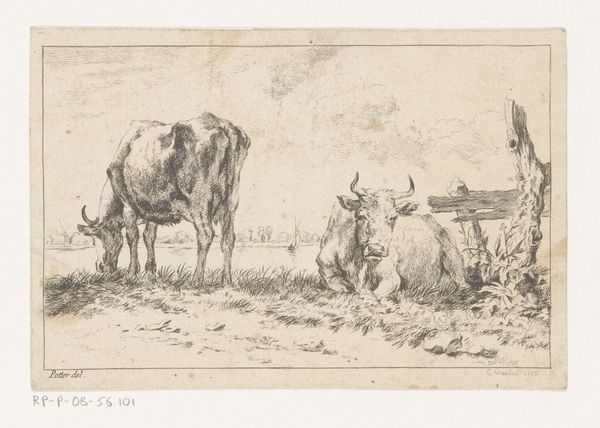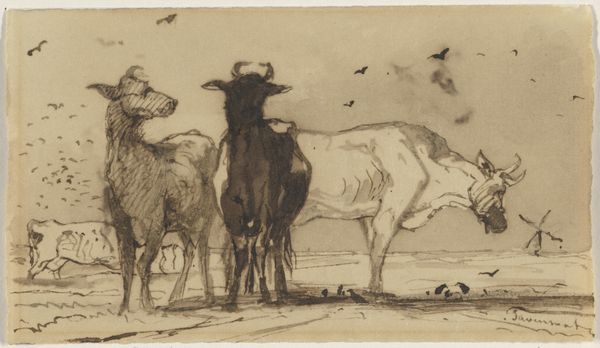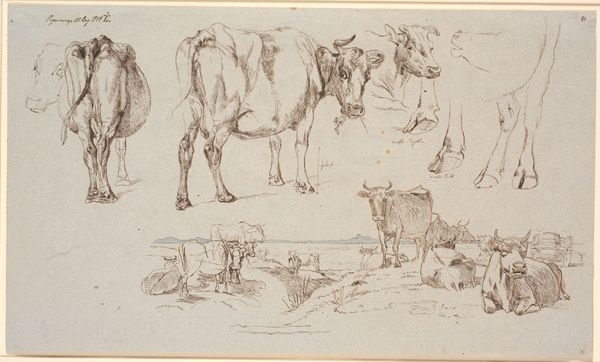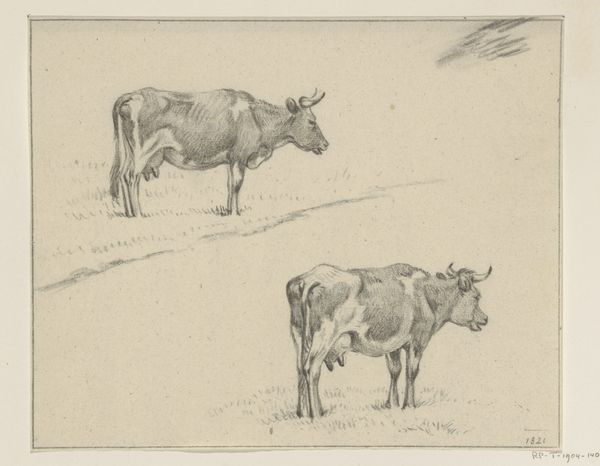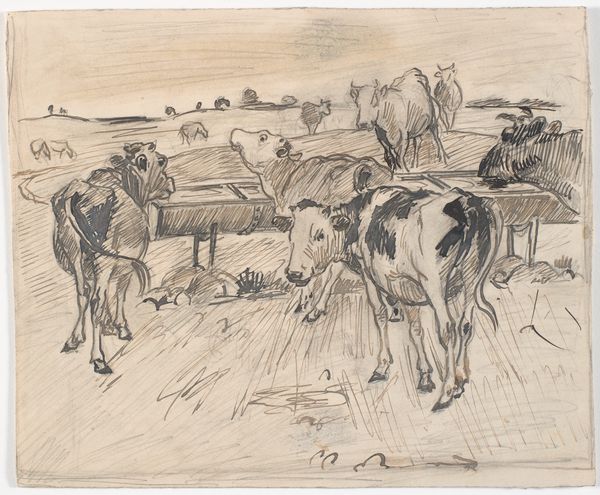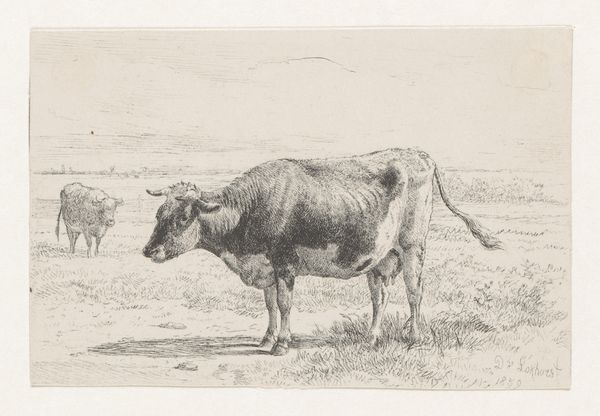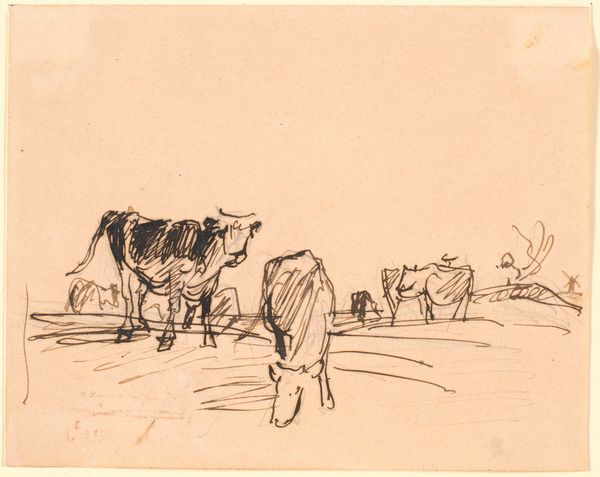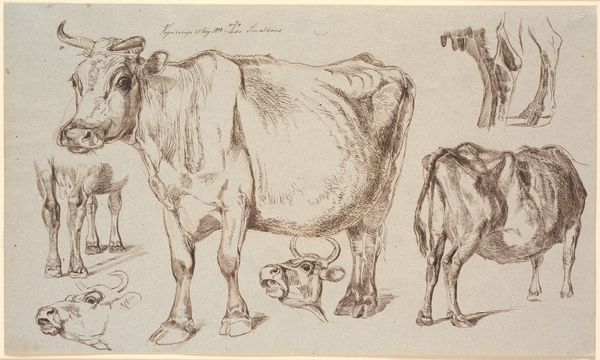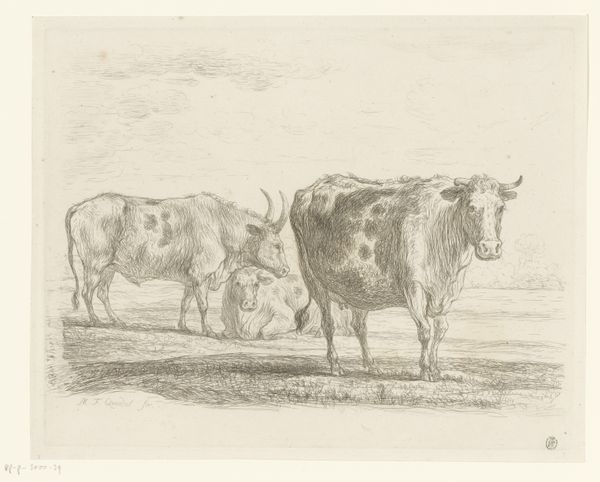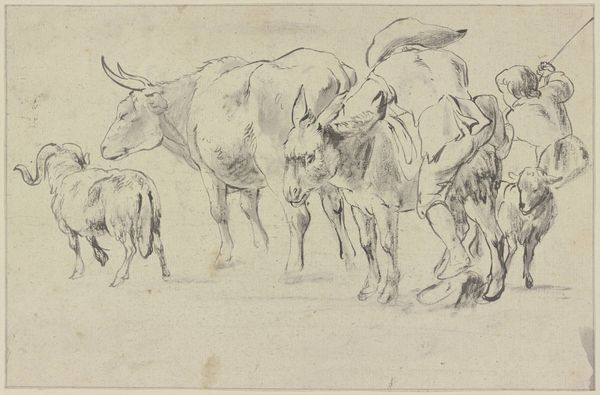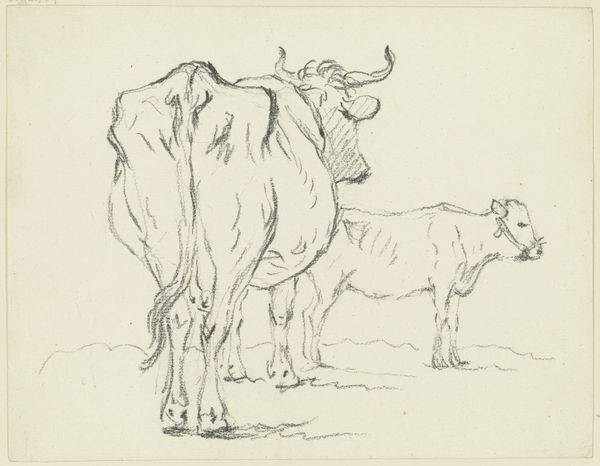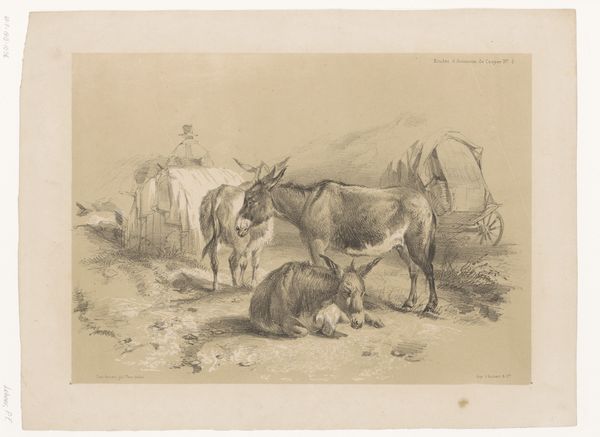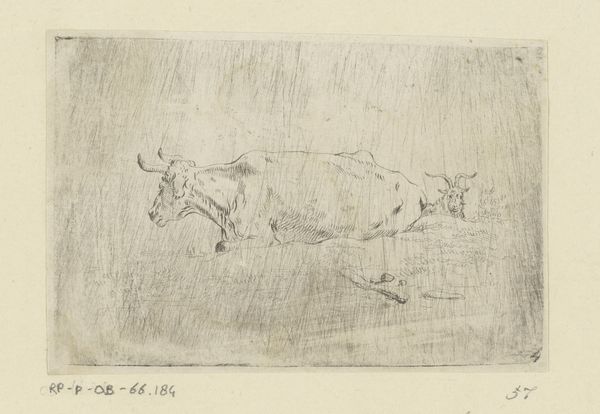
drawing
#
landscape illustration sketch
#
drawing
#
imaginative character sketch
#
quirky sketch
#
landscape
#
personal sketchbook
#
sketchwork
#
ink drawing experimentation
#
line
#
sketchbook drawing
#
genre-painting
#
storyboard and sketchbook work
#
fantasy sketch
#
realism
#
initial sketch
Dimensions: height 87 mm, width 202 mm
Copyright: Rijks Museum: Open Domain
Curator: Isn’t it interesting how a seemingly simple drawing can evoke so much? Looking at this sketch, titled "Koeien in de wei," or "Cows in the Meadow," I find myself completely transported. It was created some time between 1840 and 1880. What do you think? Editor: Utterly charming! There's a sort of humble grandeur here, isn’t there? I feel like I've stumbled upon a candid scene of rural life, so casually captured, almost as if I am eavesdropping. It’s beautifully understated. Curator: Exactly! Johannes Tavenraat, the artist, used such a delicate touch with the ink, a few simple lines give us so much information. And it makes you consider what sort of person is depicting these farm animals so caringly in their personal sketchbook. He clearly observed the way the cows stood, how they interacted. Editor: It almost reminds me of the social function of cattle ownership; farming meant life in early modern Netherlands. Do you think there could be some political intention by capturing this agriculturalist sentiment so close to his heart? It definitely carries an unspoken symbolism about national identity. Curator: Oh, I absolutely think so! You see, even in its sketch-like state, the composition is very carefully considered, a beautiful interplay of light and shadow that hints at realism but leans into artistic expression. The subtle details create a compelling tension between simplicity and complexity. Editor: I love your reading of it! I was a little skeptical, but the sketchwork shows great intent, I’ll concede. It prompts the viewer to ponder the intersection between rural labor and natural idealism. It challenges preconceived notions and allows space to discover our connections to agrarian culture. Curator: Right, this piece resides within the Rijksmuseum, it becomes this fascinating window into a bygone era but also reflecting timeless questions about agriculture in our history. I always find that the works that stay with you are the ones that trigger this curiosity and allow your mind to wander! Editor: It certainly provides food for thought, doesn’t it? This quiet little drawing quietly implores us to connect with history in our modern life, through social observation, appreciation, and self-reflection. And, ultimately, that’s a good thing.
Comments
No comments
Be the first to comment and join the conversation on the ultimate creative platform.
